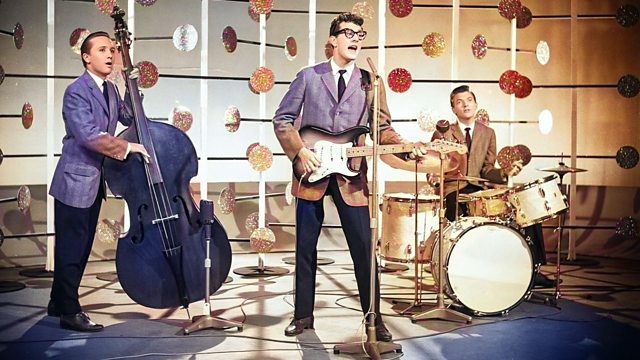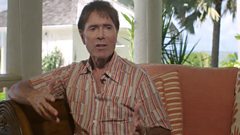
The Crickets: The 'Chirping' Crickets
The story of the first album by The Crickets, crowned by four of their best-loved songs: That’ll Be the Day, Not Fade Away, Maybe Baby and Oh, Boy!
When lanky and bespectacled 20-year-old Texan singer Buddy Holly walked into the independent studio of producer Norman Petty in February 1957, he thought he’d come to make some demos to save his already failing music career as a two-flop wonder. By the time he had left the next morning, he had recorded not only his first million-selling smash - the immortal That’ll Be the Day - but the beginnings of one of the first, and greatest, rock ’n’ roll albums of all time – The 'Chirping' Crickets.
Among the first half-dozen debuts by rock ’n’ roll’s original founders (preceded only by those of Elvis Presley, Gene Vincent, Little Richard and Chuck Berry), more significantly it was the first rock album credited to a band rather than a solo artist, as well as a landmark in the history of independent recording methods. It was the album that inspired John Lennon to form his first band with Paul McCartney, The Quarrymen, and one of the first LPs bought by 15-year-old Dartford schoolboy Keith Richards: famously, both The Beatles and The Rolling Stones would later cover songs from The 'Chirping' Crickets.
Crowned by four of Holly and The Crickets’ best-loved and biggest-selling singles - That’ll Be the Day, Not Fade Away, Maybe Baby and Oh, Boy! - the album was one of only two Buddy Holly recorded in his tragically brief career. He died in a plane crash at the age of only 22, just one year and ten weeks after the album’s release. Yet it survives as the purest testament to his skill and diversity as a singer, a pioneering guitar player and, not least, as a songwriter in an age when few of his peers composed their own material. As such, The 'Chirping' Crickets stands as one of the most influential and important long-playing pieces of vinyl in the evolution of popular music. Without it, the last six decades of rock ’n’ roll would look, and sound, dramatically different.
The 'Chirping' Crickets finally landed in November 1957, its cover presenting a unified front of the four members side by side, with no special emphasis on Holly. Yet all too soon, their leader’s fame would eclipse what had always been a clever, legally convenient illusion of democracy. Within a year of its release, after just one more Crickets single, Think It Over, Sullivan left and Holly, though still recording with Allison and Mauldin, was starting to be seen as a solo artist.
The Crickets nevertheless left behind not just a classic but also rock’s first group debut; the twelve-track, twelve-inch vinyl blueprint of the archetypal vocals-guitars-bass-and-drum formula that has kept the genre alive for 60 years since its release, and counting.
Last on
More episodes
Clips
-
![]()
Not Fade Away
Duration: 02:22
-
![]()
Recording music in 1957
Duration: 01:43
Music Played
-
![]()
Buddy Holly
Maybe Baby
Credits
| Role | Contributor |
|---|---|
| Interviewed Guest | Jerry Allison |
| Interviewed Guest | Sonny Curtis |
| Interviewed Guest | John Firminger |
| Interviewed Guest | Peter Frampton |
| Interviewed Guest | Holly George-Warren |
| Interviewed Guest | James Burton |
| Interviewed Guest | Cliff Richard |
| Producer | Nick de Grunwald |
| Producer | Celia Moore |
| Director | George Scott |
Broadcasts
- Fri 12 Jul 2019 21:00
- Sat 13 Jul 2019 01:30
- Fri 29 May 2020 22:30
- Fri 9 Feb 2024 22:35
Featured in...
![]()
Pop Greats
Celebrating some of the biggest names in music




